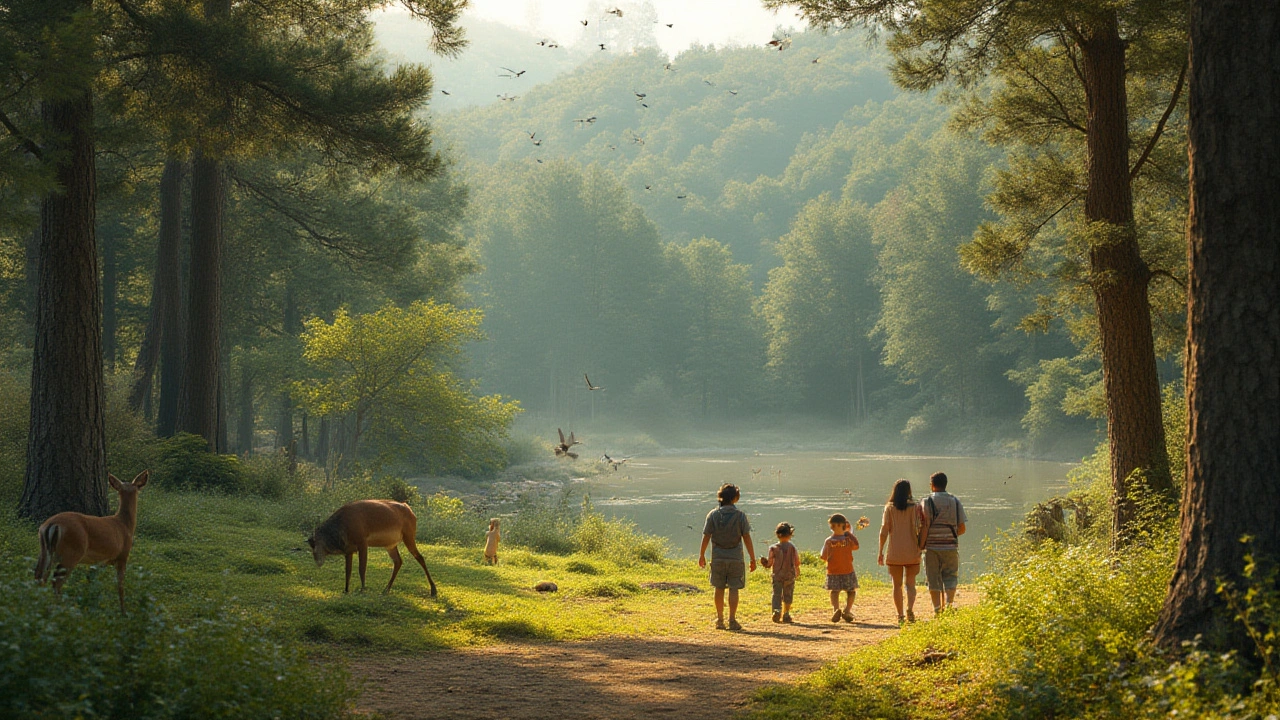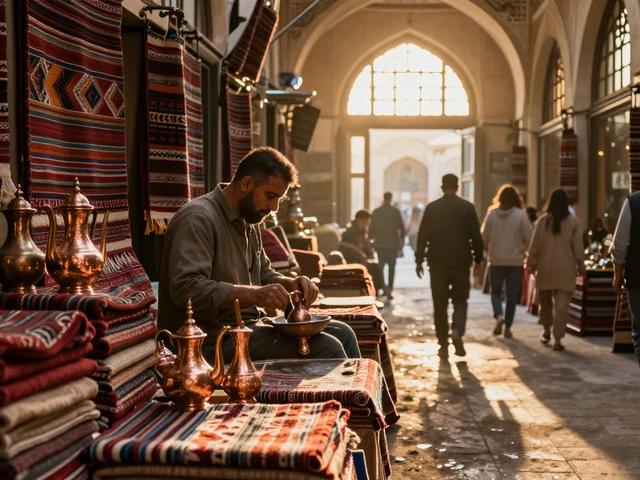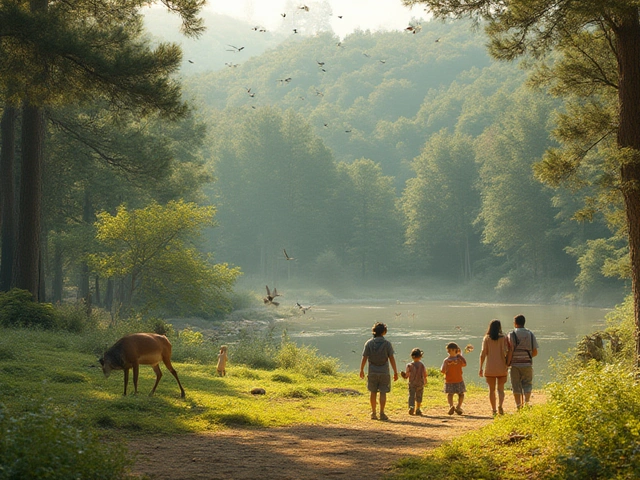If you think Istanbul is just grand mosques, mouthwatering street food, and endless crowds, you’re missing its quieter magic. Tucked between the Bosphorus bridges and the call of seabirds, Istanbul’s parks offer an escape laced with wild whispers—where foxes flick their tails, turtles slip into hidden ponds, and whole flocks of rare birds pause on their amazing journeys between continents. Seeing wildlife in wildlife parks in Istanbul isn’t just wishful thinking; it’s a reality for anyone willing to look closer—in gumboots or casual sneakers.
Where City Meets Wilderness: Istanbul’s Unique Wildlife Parks
Istanbul’s nature game is strong and surprising. While city parks like Maçka Demokrasi Parkı or Gülhane Parkı do offer shade from the buzz, true wildlife spotting nudges you a little further. Take a day to discover the forest and protected reserves that line the city’s edge, especially along the Belgrad Ormanı (Belgrad Forest) in the north or Polonezköy Nature Park east of the Bosphorus.
Start with Belgrad Forest, spanning over 5,000 hectares—a true lung for Istanbul. Here, old oaks, hornbeams, and chestnuts provide the backdrop for red foxes, European squirrels, and even hedgehogs. Early mornings are best for animal sightings: foxes dart across trails, wild boars root noisily, and if you’re patient, you might spot a shy weasel or even a rare roe deer. The Atatürk Arboretum, nestled within Belgrad Forest, boasts mini-lakes with terrapins sunning on logs and frogs croaking away their own symphony.
If you’re a bird watcher, Istanbul’s prime real estate lies near the wetlands by Küçükçekmece Lake and Büyükçekmece Lake on the western end of the city. These are migration pit stops for thousands of storks, herons, and flamingos twice a year. For a more immersive experience, head north to the Kilyos and Garipçe hills during spring and autumn migrations—Turkish birders bring binoculars, log sightings in little notebooks, and sometimes set up telescopes for visitors. The Küçükçekmece Bird Paradise is now an official Important Bird Area, supporting 233 bird species, including eagles and rare pelicans.
Love reptiles or amphibians? For the less squeamish, the wetlands and reservoirs in Şamlar Nature Park house grass snakes, pond turtles, and a chorus of tree frogs. Here’s a surprising fact: you might spot Eurasian otters, though you’ll need luck and patience. Among Istanbul’s islands, Büyükada (the largest of the Princes’ Islands) mixes pine woods, horse paths, and hidden ponds that attract lizards and butterflies—watch for swallowtails in late spring.
What makes Istanbul’s wildlife parks really stand out is that many animals are used to human presence. Urban foxes and stray cats sometimes socialize with bird feeders, and wild boars stroll along walking paths in parts of Belgrad Forest. Still, always keep a respectful distance—Turkish tradition sees wild creatures as neighbors to be respected, not chased or domesticated.
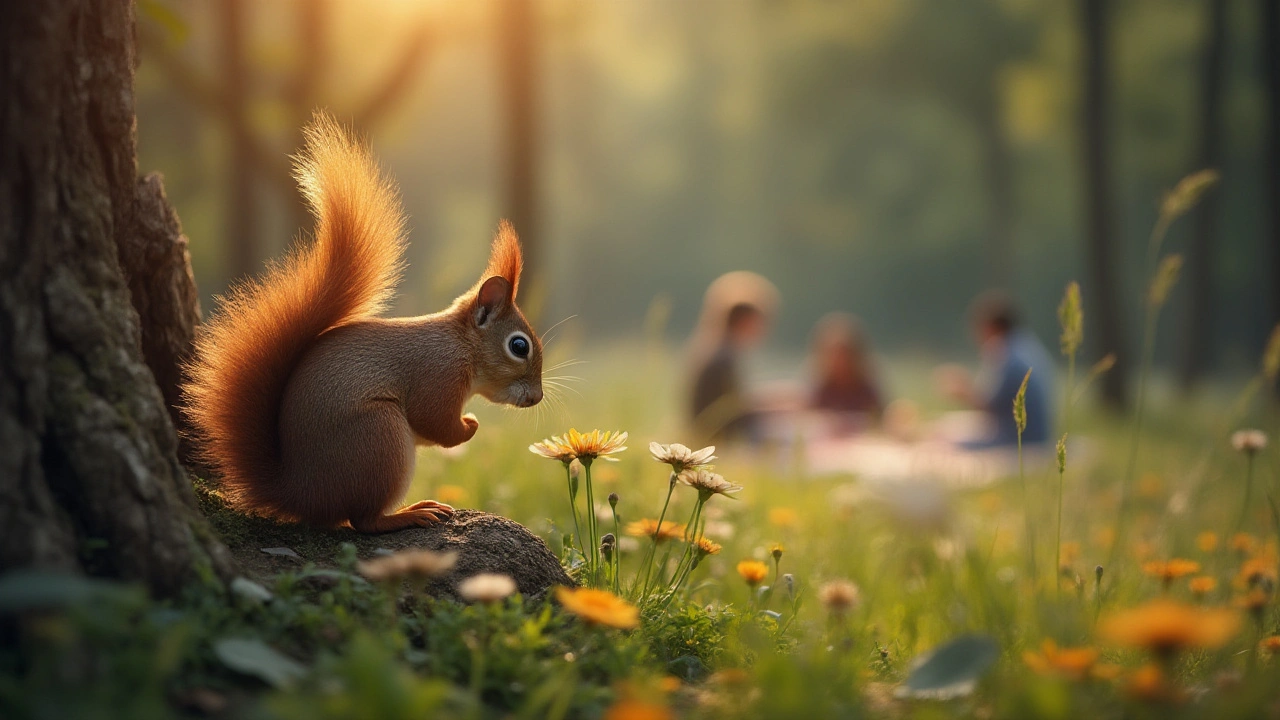
Wildlife Spotting Tips: Timing, Etiquette, and Best Practices in Istanbul
If you want real wildlife experiences, timing is everything. Most Istanbul animals are shy. Early mornings or dusk offer your best shot—especially after summer rain, when mammals come out to forage. During Ramazan or national holidays, the parks get crowded in the afternoons, so try hitting the trails right after sunrise, or sneak in on a midweek morning if your schedule allows.
Pack water, sandwiches from your local fırın (bakery), and binoculars. Mobile apps like Merlin Bird ID or iNaturalist can help you identify what you spot, and many local Istanbul universities like İstanbul Üniversitesi-Cerrahpaşa occasionally host citizen science days, where they help amateur spotters count animals and birds. If you’re new to hiking, stick to marked trails—wild boars in Belgrad Forest have been known to charge if startled, but they usually avoid humans if they hear your footsteps.
If you visit Polonezköy Nature Park, look for wooden information boards. They provide Turkish and English notes about local animals, and the area is home to the lesser horseshoe bat, tawny owl, and sometimes European badgers. On weekends, you’ll see Istanbul families gathering for mangal (barbecue) picnics—sharing food is a tradition here, but don’t feed wild animals or stray dogs; it disrupts the delicate city-wildlife balance.
Respect for nature runs deep in Turkish culture. It’s considered ayıp (shameful) to litter or hurt animals—municipal teams (belediye görevlileri) patrol the main parks. The Istanbul Metropolitan Municipality (İBB) has invested in wildlife conservation signage, trash sorting, and habitat restoration, so bring reusable bags and keep noise down. Many locals greet wild animals with a quiet “Merhaba!”—a small way to say, yes, we share this city.
Transportation can be its own adventure. For Belgrad Forest, buses from Hacıosman Metro drop you at Bahçeköy, but if you’re headed to Polonezköy, a car makes things easier. Ferries combined with bikes get you to Heybeliada or Büyükada on the Princess Islands; just remember, weekends can be packed. Private guides are available through Turkish eco-tourism outfits like Doğa Derneği or WWF Türkiye for those who want in-depth wildlife walks.
It’s worth knowing basics about the park’s plants too. Some years, Istanbul parks bloom with wild cyclamen, crocuses, or even snowdrops—if you pick flowers, locals will remind you gently to leave them for others to enjoy. Wild bees and butterflies also thrive here, making spring the ultimate sweet-spot for spotting action.
For those documenting sightings, Istanbul’s wildlife Instagram accounts (like @istanbulunVahsiHayati) give daily updates and tips—follower submissions often feature foxes crossing snowy university campuses or kestrels nesting on old Ottoman walls. If you want to go deeper, Istanbul University’s biology faculty sometimes runs open talks or birding walks for the public—announced on their web page and social media.
| Park/Reserve | Main Wildlife | Season | Accessibility |
|---|---|---|---|
| Belgrad Forest | Foxes, wild boar, birds, squirrels | Year-round, best in spring | Bus, car, taxi |
| Polonezköy Nature Park | Badgers, owls, bats, butterflies | Spring, autumn | Car, shuttle tours |
| Küçükçekmece Bird Paradise | Flamingos, pelicans, storks | Spring, autumn (migration) | Metrobus, car |
| Princes’ Islands (Büyükada, Heybeliada) | Turtles, lizards, seasonal birds | Spring, summer | Ferry, bike |
| Şamlar Nature Park | Otters, turtles, ducks | Year-round | Car, taxi |
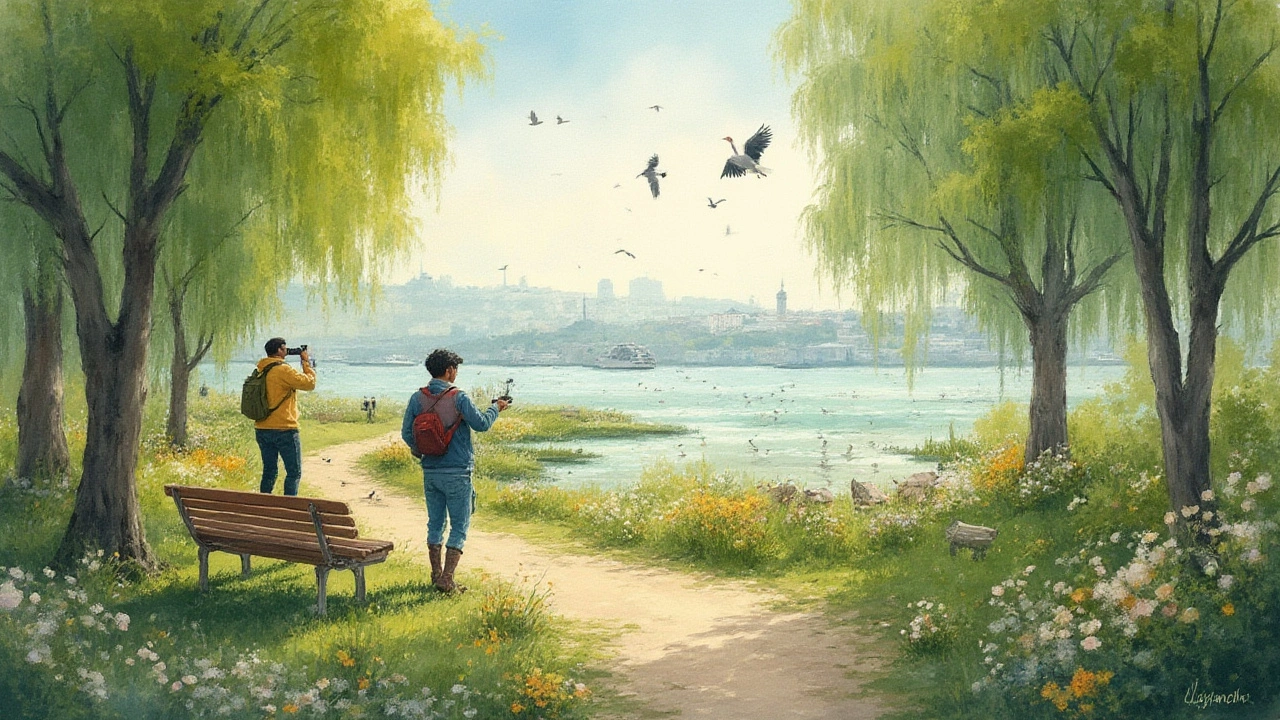
Hidden Corners, Local Legends, and Events: Istanbul’s Wild Side Up Close
If you’ve roamed the usual haunts, there’s still more to surprise you. Istanbul’s woodland edges hide lesser-known gems, like the Yakacık Mesire Alanı on the Asian side—a favorite with locals for off-the-path walks, with woodpeckers and pine martens in the canopy. Çilingoz Nature Park, just outside the city’s edge along the Black Sea, offers the wildest mix: from rare orchids to snake eagles, and even deer if you’re lucky. This spot is unbeatable for weekend campers who want sand dunes, riverine forests, and a shot at seeing foxes on moonlit dunes.
Locals often tie in wildlife walks with traditions—like making a wish at the centuries-old springs of Polonezköy or sipping tea in the wooden köşks (pavilions) before heading out. Istanbul’s wild spaces are connected to rest and ritual: families lay down kilims for a shared breakfast, street photographers snap wild poppies after rain, and elders relate legends about forest spirits to giggling grandchildren.
Each spring and autumn, Istanbul hosts a handful of nature festivals. The Istanbul Bird Festival, usually in April, draws birdwatchers with guided tours in the wetlands and the forests north of the Bosphorus. Eco-clubs from local universities organize “Dawn Chorus” walks, where dozens of students identify birds by song alone—the perfect way to see Istanbul’s wild life through local eyes. WWF Türkiye often leads clean-up hikes and bat-watching evenings, especially in the late summer.
For safety, keep these tips in mind: wear long pants for ticks, shake out your shoes after picnicking, and carry a small trash bag—Turkish parks may be beautiful, but rubbish bins are spaced out. Mosquitoes come alive at dusk, especially near lakes, so repellent is your best friend. If you get lost, park security usually patrol the main Belgrad trails by bicycle, and locals are quick to help with directions or a friendly chat.
Istanbul’s best wildlife spots are changing, too. In the past five years, the city has launched several habitat restoration projects funded by both the municipality and local NGOs. These support native flora, add bird nesting boxes, and restore small streams—so now, wild ducks and otters are appearing again in places that hadn’t seen them for decades. Local beekeepers work alongside botanists to monitor plant diversity, and some parks even sell organic honey and herbal teas during community events.
Here’s something you might not know: Istanbul hosts nearly 375 bird species—almost half of all species in Turkey, thanks to its unique geography between Asia and Europe. From June to September, you might even catch blue kingfishers diving along the Golden Horn or night herons patrolling old Ottoman cemeteries. It’s wild, but beautifully ordinary for life in Istanbul. Bring a camera, tonic for bug bites, and your curiosity—you might spot a kestrel’s silhouette above Roman ruins or encounter a family of turtles sunning by a park bench.
- For eco-conscious relaxation, try hiring bikes at Maçka Parkı and cycling toward Sadabad Park, known for playful squirrels and rare butterflies.
- Local bakeries near Belgrad Forest, like Fırın 29, sell simit and poğaça perfect for a trail breakfast.
- If you join a local wildlife walk, ask Turkish participants about the park’s history—they’ll often share stories passed down by grandparents.
- Never disturb bird nests or turtle eggs, even if local kids point them out. Turkish wildlife laws have hefty fines for interference.
- The autumn mushroom season (especially in Polonezköy) is legendary—look for chanterelles, but never eat anything wild unless you ask a local expert first.
Just when you thought Istanbul couldn’t surprise you again, the city’s wild side pops up in the hush of boughs and the flit of a jay. For locals, expats, and travelers alike, these parks aren’t just escapes: they’re proof that Istanbul’s spirit is as wild and layered as the city’s history itself. Lace up, listen closely, and let the forests show you another face of this unforgettable city.
